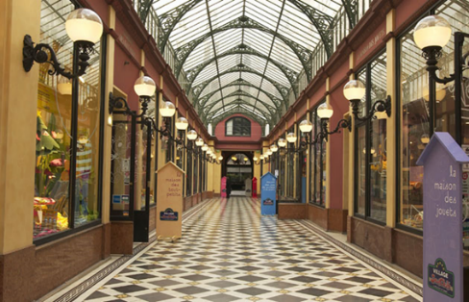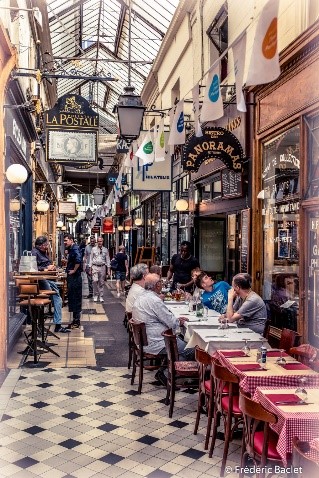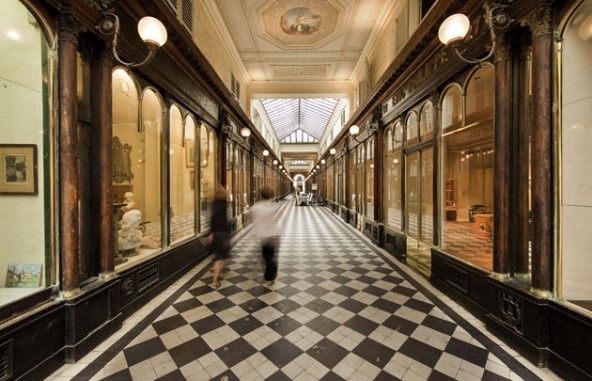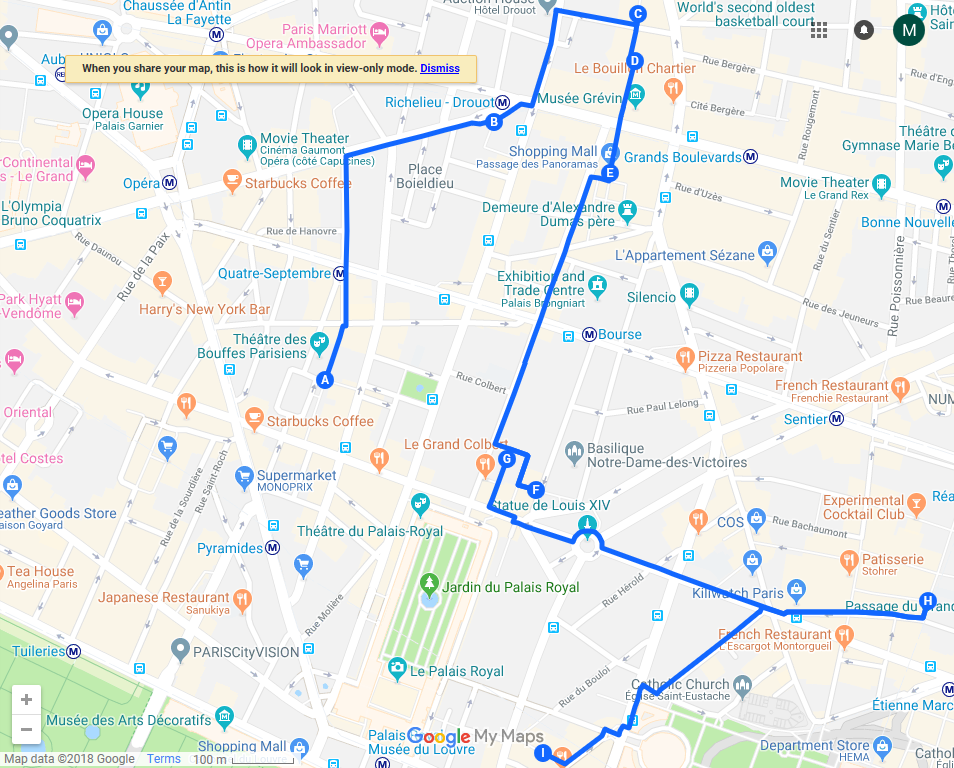The hidden passages in Paris are the ancestors of today’s shopping centres. The unique charm of this galleries will transport you immediately into the 19th century. We have mapped out a route with some of the most breath-taking passages in Paris.
A. Passage Choiseul
40 rue des Petits Champs – 75002 Paris
This is one of the longest passages in Paris, not less than 190 m long. It was built in 1825 by the architect Tavernier. The gallery bears the name of Étienne-François de Choiseul-Beaupré-Stainville, Minister of War and Minister of Foreign Affairs under Louis XV. Louis Ferdinand Celine lived in the Passage Choiseul between 1899 and 1907. The famous author Verlaine had his first bookstore in this gallery. You will find shops and restaurants in line with your budget. You can also visit the Opera Garnier, an impressive monument a few hundred meters from the passage Choiseul.

B. Passage Des Princes

5 boulevard des Italiens – 75002 Paris
Passage des Princes was built in 1860 on initiative of the businessman Jules Mirès. The passage connects Boulevard des Italiens to the Rue de Richelieu. It was destroyed in 1985 and rebuilt exactly the same in 1995. Towards the Boulevard des Italiens, the passage is embellished with a colored glass dome dating from the 1930s. There are a lot of game stores located in the gallery. Also the restaurant Peter’s is very well known.
C. Passage Verdeau
6 rue de la Grange Batelière – 75009 Paris
Passage Verdeau was opened in 1846 and named for his founder ‘Verdeau’ who invented the rental of linen for hotels, restaurants or other receptions. It is one of most airy passages due to its high fishbone canopy. The design is featured by neoclassical lines. There are a lot of antique- and collector shops to be found.

D. Passage Jouffroy

10 boulevard Montmartre – 75009 Paris
Passage Jouffroy is one of the most famous passages in Paris. It was built in 1847 and was the first passage built entirely of iron and glass and has underfloor heating. In 1882, the passage found a renewed interest thanks to the opening of the museum Grévin which gives a directly exit into the passage. There is also a famous hotel located in the passage: Hôtel Ronceray.
E. Passage des Panoramas
6 rue de la Grange Batelière – 75009 Paris
Passage Verdeau was opened in 1846 and named for his founder ‘Verdeau’ who invented the rental of linen for hotels, restaurants or other receptions. It is one of most airy passages due to its high fishbone canopy. The design is featured by neoclassical lines. There are a lot of antique- and collector shops to be found.

F. Galerie Vivienne

4 rue des Petits-Champs – 2e Arrondissement
The Vivienne Gallery, built in 1826 in neoclassical Pompeian style, is one of the most iconic covered arcades in Paris. It’s located close to the Bibliothèque Richelieu and Palais-Royal. There are variety of luxury shops: ready-to-wear boutiques, tea rooms, gourmet food boutiques, wine cellars, grocery shops, old bookshops and much more. Pay attention to the colourful mosaics on the ground and the beautiful glass roof.
G. Galerie Colbert
4 rue Vivienne – 75002 Paris
Close to Galerie Vivienne you can find Galerie Colbert, built in 1823. The gallery belongs to the Bibliothèque Nationale. Unlike other Parisian covered passages, there are no stores here. Pay attention to the beautiful rotunda topped with a glass dome and the stunning marble columns. Institut Nationale d’Histoire de l’Art (INHA) and the Institut National du Patrimoine (INP) are located in this building.

H. Passage du Grand-Cerf

145 rue Saint-Denis – 75002 Paris
The passage du Grand Cerf was built in 1825 as the the terminus of the Messageries Royales. Today it’s one of the most attractive passages of Paris that brings together jewellery and fashion designers, gallery owners and decoration shops. It is made of metal and wrought iron with a beautiful glass roof allowing light to shine through it.
H. Galerie Véro Dodat
19 rue Jean-Jacques Rousseau – 75001 Paris
In 1826, two investors, Charcutier Véro and Dodat, decided to build a gallery between the streets of Bouloi and Jean-Jacques Rousseau. They built a neo-classical gallery with copper and cast iron ornaments, mirrors, paintings, columns, and a floor paved with black and white marble and globes of light. It was one of the first galeries to have gas lighting, an achievement at the time. It houses many elegant boutiques: furnishings, decorations, art gallery, musical instruments, old dolls, etc.


